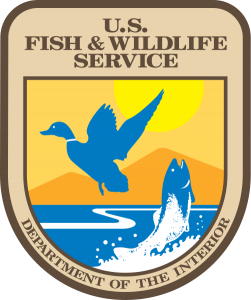The Secretary of Interior announced last week she was proposing expanding recreational hunting and fishing on several of Oregon’s national wildlife refuges. Under her proposal, three refuges would allow hunting for the first time in their history, and three others will expand hunting and sport fishing beyond current levels (see list at bottom).
The announcement by Secretary of Interior Sally Jewell that she is proposing to expand fishing and hunting opportunities throughout the National Wildlife Refuge System, in more than 25 different refuge sites, shows the commitment of the administration to allowing public acce ss to and the use of public lands, said Liz Hamilton, executive director of the Northwest Sportfishing Industry Association.
ss to and the use of public lands, said Liz Hamilton, executive director of the Northwest Sportfishing Industry Association.
“The fact that half of the nation’s refuges proposed for new hunting are right here in Oregon will be an economic boom for our state,” Hamilton said. “There are numerous studies that show outdoor recreation is an important economic driver for the Oregon economy. For example, according to the Outdoor Industry Association outdoor recreation in Oregon generates $12.8 billion in consumer spending, $4 billion in wages and salaries, $955 million in state and local revenue and directly connects to 141,000 jobs in the state.”
The NSIA advocates for keeping public lands in public hands, as the issue has been recently debated in Congress. Senator Ron Wyden, who chairs the Senate Committee on Energy and National Resources, is working on a plan that will balance the need for timber production with the public access and protection issues.
“The importance of keeping public lands in public hands is an issue that should concern all Oregonians,” Hamilton said. “We need to avoid false choices in the debate about what to do about public lands. Creating a balanced plan that protects the recreation and outdoor economic drivers, while helping the timber industry and keeping habitat for fish and wildlife, should be the goal.”
Hamilton said that three of the six sites Jewell is focusing on are examples of how Land and Water Conservation Funds can help open up lands to the public. These funds use revenues from offshore oil and gas development to conserve parks, open spaces and wildlife habitat for the benefit of hunting, fishing and outdoor recreation. The Siletz Bay National Wildlife Refuge, the Bandon Marsh National Wildlife Refuge and, the most recent, the Nestucca Bay National Wildlife Refuge all received LWCF funds to open them up. The most recent project to utilize LWCF funds is the Newstucca Bay refuge, which has been expanded this year and was opened up last month.
As a strong supporter of public lands conservation and providing public access to these areas, Hamilton applauded the opening and expansion of sports hunting and fishing in the six refuges in Oregon.
“Sportsmen and women were a major driving force behind the creation and expansion of the National Wildlife Refuge System more than a century ago and continue to be some of its strongest supporters, especially through their volunteer work and financial contributions,” Jewell said in a press release last month. “Keeping our hunting and angling heritage strong by providing more opportunities on our refuges will not only help raise up a new generation of conservationists, but also support local businesses and create jobs in local communities.”
Under the National Wildlife Refuge System Improvement Act of 1997, the Service can permit hunting and fishing along with four other types of wildlife-dependent recreation where they are compatible with the refuge’s purpose and mission. Hunting, within specified limits, is permitted on more than 329 wildlife refuges. Fishing is permitted on more than 271 wildlife refuges.
“Hunting and fishing are healthy, traditional outdoor pastimes deeply rooted in America’s heritage and have long been enjoyed on hundreds of national wildlife refuges under the supervision of our biologists and wildlife managers,” said Director of the U.S. Fish and Wildlife Service Dan Ashe. “After careful consideration and review from the Service, this proposal represents one of the largest expansions of hunting and fishing opportunities on wildlife refuges in recent years.”
The Service manages its hunting and fishing programs on refuges to ensure sustainable wildlife populations, while offering historical wildlife-dependent recreation on public lands. Other wildlife-dependent recreation on national wildlife refuges includes wildlife photography, environmental education, wildlife observation and interpretation.
National wildlife refuges generate important benefits from the conservation of wildlife and habitat through spending and employment for local economies. According to the National Survey of Fishing, Hunting and Wildlife-Associated Recreation published every five years by the Service, more than 90 million Americans, or 41 percent of the United States’ population age 16 and older, pursued wildlife-related recreation in 2011. They spent more than $144 billion that year on those activities. Nearly 72 million people observed wildlife, while more than 33 million fished and more than 13 million hunted.
The Service proposes opening the following refuges to hunting for the first time:
Oregon
- Baskett Slough National Wildlife Refuge: Open to migratory bird hunting.
- Nestucca Bay National Wildlife Refuge: Open to migratory bird hunting.
- Siletz Bay National Wildlife Refuge: Open to migratory bird hunting.
Meanwhile, under the proposal, the Service would expand hunting and sport fishing on the following refuges:
Oregon
- Bandon Marsh National Wildlife Refuge, OR and WA: Expand migratory bird hunting. The refuge is also already open to sport fishing.
- Julia Butler Hanson Refuge for the Columbian White-Tailed Deer, OR and WA: Expand migratory bird hunting. The refuge is already open to big game hunting.
- Malheur National Wildlife Refuge: Expand migratory bird hunting and sport fishing. The refuge is already open to upland game hunting and big game hunting.
Washington
- Willapa National Wildlife Refuge: Expand migratory bird hunting and big game hunting. The refuge is already open to upland game hunting.
For Jewell’s complete press release visit:
